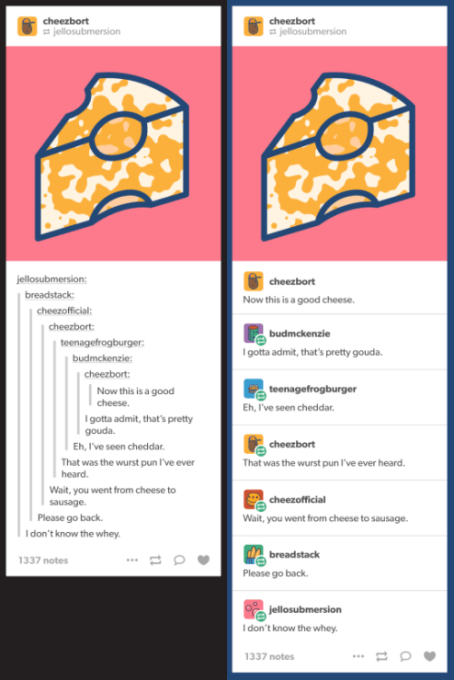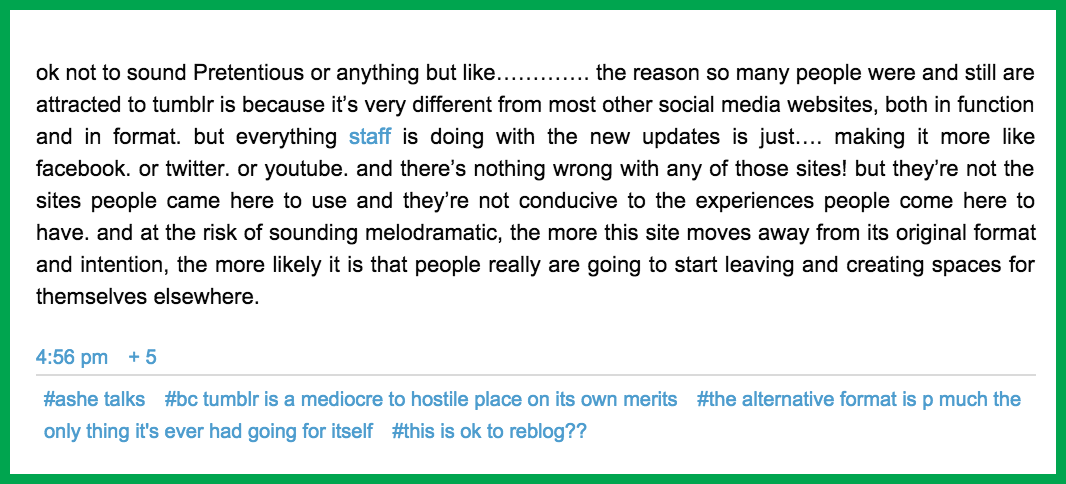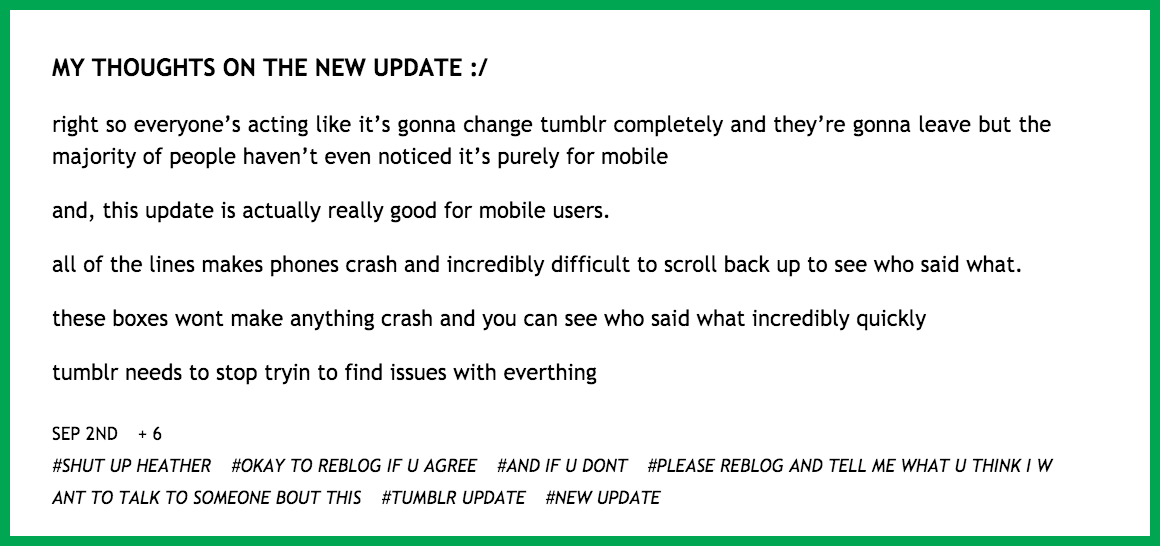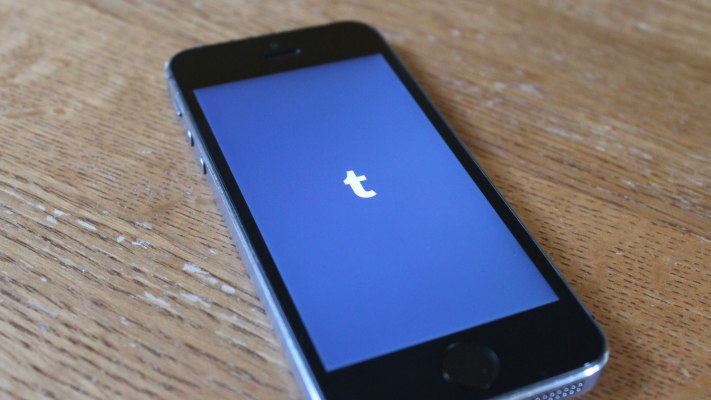One of blogging site Tumblr’s flagship features, the reblog – meaning the reposting of another person’s content onto your own site – is getting a significant makeover starting today. The company is introducing a change as to how these reblogs appear on users’ dashboards, making them far more readable than they were previously.
No longer a long list of blockquote indents, where each new user adds their own commentary to what was said before, the new reblogs will simply list each comment one after the other. This makes the comments easier to read, but also makes the Tumblr post much longer than when the older-style reblogs were in effect.

This may seem like a minor feature tweak, but it’s actually a huge overall of what it means to use Tumblr.
Like many social media properties, a lot of Tumblr entries are actually repostings of something another user had published earlier. In addition to the content itself – often an image, web link, video or block of text – the reblogger would then add their own commentary to the item in question.
As posts become popular, those “reblog chains” become more difficult to parse. It’s hard to tell who said what, or even read the comment in the first place as the captions have less room before they have to wrap to the next line.
In posts that go viral, the reblog chains can end up looking more like this:

That’s a lot of scrolling, before you get to the part with the comments!
Of course, this problem is exacerbated on mobile devices, whose limited screen sizes make long reblogs even harder to read. And like every company today, Tumblr is looking to improve its mobile product’s usability to the benefit of both its users and its advertisers.
However, while this may have been a user interface design flaw from the start, the Tumblr reblog became one of the network’s defining features – a way it differentiated itself from other sites, and gave it a unique style.
Like “Tumblr’s teenspeak,” the punctuation-less, rhetorical speech that fills the network, the ability to understand and decipher the reblog was something that Tumblr’s younger users were easily capable of, while older or more infrequent users may have been left scratching their heads.
And like many things in the teen world, the ability to exclude adults from the conversation soon became one of the advantages to this messy, confusing formatting style.

Tumblr users’ reactions to the new style, so far, seem divided.
While there are always those who fight against any change on a site simply because it’s new and different, others with concerns make some valid points. For example, though it’s easier to read on mobile, the new reblogs will involve more scrolling, which isn’t necessarily an advantage. (This could be modified by removing user icons from the new design, which lengthen the posts.)
In addition, the change makes it more difficult for those who use the service for role-playing, others have noted.
But some say the new style is actually an improvement, and will be welcome on mobile.

However, the advantage to the new style, beyond being more readable, is that it will no longer make misattributions so easy.
This has been a problem in the past, as some users would edit the text that came before their reblog in order to make it look like people had said something they did not. They also won’t be able to selectively delete captions when reblogging. And original posters will now always get credited as the source, no matter how many reblogs occur, as their username will be stuck to the bottom of posts.
Making sure original posters are being credited for their work is something that Tumblr has focused on with other changes in the recent past, as well. For instance, when it introduced its GIF search engine feature, it also tweaked the way GIFs appear on posts, making sure that the image’s creator was alway properly cited.
The updated reblog feature is rolling out today across all posts going forward, as well as those that were published in the past, says Tumblr. But the new look is only for dashboards – users blogs will continue to display reblogs based on their theme’s settings.
